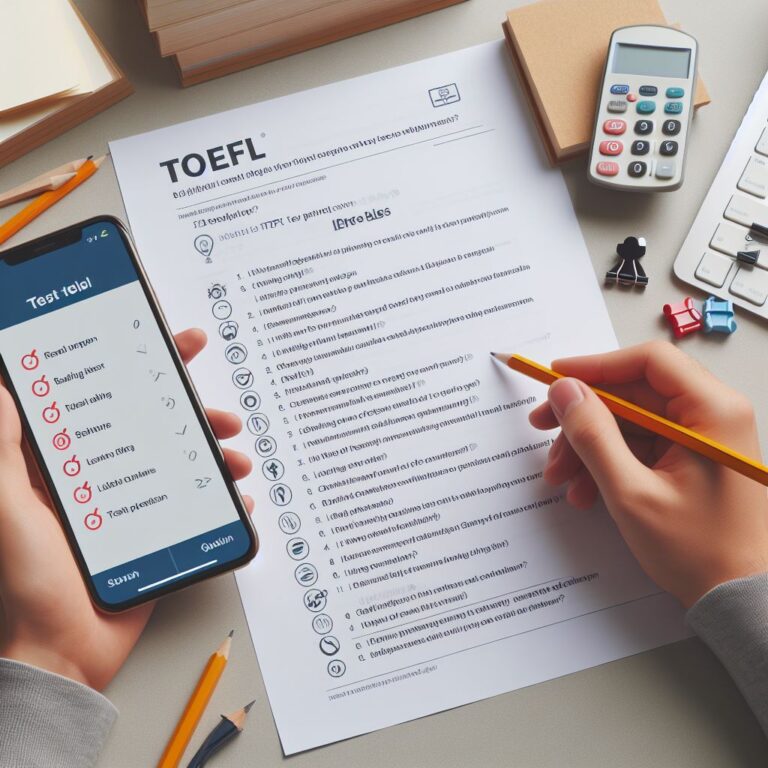TOEFL Reading Question Types

Key Takeaways:
The reading part of the TOEFL iBT exam has different types of questions. The question types include:
Inference Question Type
Vocabulary Question Type
Rhetorical Purpose Question Type
Detail (Factual Information) Question Type
Negative Factual Information Question Type
Essential Information (Sentence Simplification) Question Type
Sentence Insertion Question Type
Complete the Summary (Prose Summary) Question Type
Complete the Table (Fill in a Table) Question Type
What you will find in this guide:
TOEFL Reading
If you are planning to take the TOEFL iBT test, you may be wondering how to prepare for the reading section. The reading section is one of the four sections of the test, along with listening, speaking, and writing. The TOEFL iBT Reading section is designed to measure your ability to read and comprehend academic texts in English. The reading section consists of two passages, each about 700 words long, with 10 questions per passage. You have 35 minutes to complete the reading section, which means you have about 17.5 minutes per passage. The reading passages are excerpts from university-level textbooks that introduce various topics from different disciplines. You may encounter passages from humanities, arts, business, science, or social science fields. You do not need to have any prior knowledge of the topics to answer the questions, as all the information you need is provided in the passages. However, you may need to use the glossary feature to look up some unfamiliar words or phrases.
The TOEFL Reading section can be daunting, especially given the high-level vocabulary and the speed at which you need to read and comprehend the passages1. But don’t worry! With the right strategies and test day preparation, you can improve your reading comprehension and tackle this section with confidence.
One of the key strategies is understanding the different question types that appear in the TOEFL Reading section1. Each question type tests a specific academic reading skill, and knowing how to approach each one can significantly boost your performance.
What Skills Does it Test?
The reading section tests your ability to understand the main ideas, details, inferences, rhetorical purposes, vocabulary, sentence structures, and summaries of the passages. The questions are all multiple-choice, with four answer choices for each question. Some questions may require you to select more than one answer. The questions are presented in the same order as the information in the passage, so you can follow along as you read. You can also go back and forth between the passage and the questions as you wish. You can skip questions and come back to them later, or change your answers as you go.
TOEFL reading topics are generally university-level textbook introductions of different subjects.
You may get topics related to the following disciplines
- Humanities/arts,
- Profession or business-oriented,
- Science (Physics, Chemistry, and biology-related), and
- Social Science-related TOEFL reading passages.
Here is a table that summarizes the information about the TOEFL iBT Reading section:
| Number of Questions | Time Duration | Reading Passages | Score Range | Type of Questions |
|---|---|---|---|---|
| 20 questions | 35 minutes | 2 passages | 0 – 30 | Multiple Choice |

TOEFL Reading Question Types
Let’s dive into the various question types and boost your reading score in the reading part.
Inference Question Type: These questions require you to draw conclusions based on the information given in the passage. You’ll need to use context clues and your ability to make inferences to answer these questions.
Vocabulary Question Type: Here, your understanding of synonyms, antonyms, and idioms is tested. You’ll need to determine the meaning of a word or phrase in the context of the passage2.
Rhetorical Purpose Question Type: These questions ask why the author has used a particular phrase or idea1. Understanding the author’s purpose and tone can help you answer these questions.
Detail (Factual Information) Question Type: These questions test your ability to identify specific details or facts mentioned in the passage. Good skimming and scanning skills can be beneficial here.
Negative Factual Information Question Type: Similar to detail questions, but you need to identify information that was NOT mentioned or is NOT true according to the passage1.
Essential Information (Sentence Simplification) Question Type: These questions ask you to identify the sentence that accurately and completely summarizes the main idea of a paragraph.
Sentence Insertion Question Type: You’ll be asked to decide where a new sentence best fits into a passage1. This tests your understanding of text structure and sequencing.
Complete the Summary (Prose Summary) Question Type: Here, you’ll need to select the option that best summarizes the entire passage1. This tests your summarizing and paraphrasing skills.
Complete the Table (Fill in a Table) Question Type: These questions require you to complete a table by dragging statements into it1. This tests your ability to understand and organize information.
Remember, the TOEFL Reading section is not just about reading—it’s about understanding the main idea, the author’s purpose, the supporting details, and the structure of the text. It’s about making text-to-text, text-to-self, and text-to-world connections. It’s about distinguishing fact from opinion, understanding figurative language like metaphors and similes, and recognizing the author’s tone3.
Sample Reading Questions
1. Fact Question
The fact question is a fundamental type of question in the Reading Section and is often perceived as the simplest by many students. This type of question wants you to find accurate statements based on your reading.
The questions may look like this:
“Which of the following is true according to the paragraph?”
or
“The paragraph indicates that ___ happened because…”
These fact questions require you to extract information directly from the passage. Therefore, it’s crucial to stick to the topic of the passage and select answers that are explicitly stated in the text.
2. Negative Fact Question:
This type of question is the opposite of the factual information question.
Examples of negative fact questions include:
“Which of the following statements is NOT accurate?”
or
“All of the following are mentioned in the passage EXCEPT…”
Negative fact questions require you to identify what is not correct or not mentioned in the passage. Be sure to pay close attention to the words “NOT” and “EXCEPT.”
3. Inference Question:
These questions are more challenging than factual information questions. Rather than identifying what is explicitly stated in the passage, you need to determine what is strongly suggested.
Examples of inference questions include:
“What can be inferred about ___?”
or
“The passage suggests that ___”
Inference questions prompt you to identify a strong implication made in the passage. The correct answer is one that can be justified using only the information from the text.
4. Rhetorical Purpose Question:
“Rhetoric” refers to the effective use of language. Therefore, rhetorical purpose questions ask you to determine the impact the author of the passage intends to have on the reader.
Examples of rhetorical purpose questions include:
“Why does the author refer to ___?”
or
“The author discusses ___ in the passage in order to…”
Rhetorical purpose questions can blur the distinction between the meanings of words and their implications. It’s important to practice your vocabulary skills to stay focused on the author’s intent, rather than the connotations of each word choice. Common phrases in the answers to rhetorical purpose questions include: “to illustrate,” “to clarify,” and “to contrast.”
5. Vocabulary Question:
This type of question tests your understanding of a specific word’s meaning.
Examples of vocabulary questions include:
“The term ___ is most similar in meaning to…”
or
“When the author mentions ___, they are referring to…”
Remember, vocabulary questions aren’t always straightforward! You need to comprehend the context in which the word is used in the passage to correctly interpret its meaning.
For instance, the phrase “it’s raining cats and dogs” doesn’t literally refer to animals. Instead, it’s an idiom that means “it’s raining heavily.” Always use your context clues and look for the most relevant meaning!
6. Sentence Simplification:
In this type of question, you’re tasked with finding the sentence option that mirrors the meaning of a given sentence.
The sentence will be highlighted in the passage.
An example of a sentence simplification question is, “Which of the following best encapsulates the key information in the highlighted sentence?”
Incorrect answers often overlook an important point from the passage or could misconstrue or imply a different meaning than that in the reading passage.
7. Reference Question:
Unlike inference questions, reference questions require you to identify the relationship between two words. You’re not looking for an implied meaning, but rather the connection between two distinct words.
For example, a reference question might be phrased as: “The term ___ in the passage refers to…”
Common connections include a pronoun and the word that the pronoun refers to (the antecedent). Ensure that their tenses and context align, like “she” → “has”, not “she” → “have.”
8. Reference Question:
Insert Text Question: Also known as a sentence insertion question, this type of question asks you to determine the most logical and grammatically correct place to insert a new sentence into the reading passage.
An example of an insert text question provides you with a new sentence, then asks you where that sentence fits best.
Incorrect answers often disregard context, pronoun-antecedent relationships, or when read aloud, sound awkward within the passage as a whole. When in doubt, try reading the sentence aloud as you place it within the passage.
9. Insert Text Question
Insert text questions come in two types of summary and fill in the blanks questions.
Summary Question: Typically one of the last questions for each passage, the summary question prompts you to select 3 major points from the reading passage out of 6 answer choices.
An example of a summary question provides you with the main topic of the entire summary question, then leaves 3 bullet points underneath the topic with 6 answer choices listed below those blank bullet points.
Since this question is worth 2 points, you can earn partial credit for getting some of the questions right. Incorrect answer choices often include details that are too specific to be a summary point and points that stray from the given topic of the passage.
Fill in the Table Question: These questions, also typically one of the last for each passage, ask you to categorize points from the passage by topic, similar to a summary question but divided into two different topics.
An example of a fill-in-the-table question will provide a chart with two different topics listed on the side, 5 blank bullet points in total, and 7 answer choices to choose from. Like the summary questions, it is possible to earn partial credit on the fill-in-the-table questions, up to 3 points for getting all 5 answers correct.
This question will test your ability to differentiate between topics in one reading passage, so ensure to categorize information by its most suitable category.






